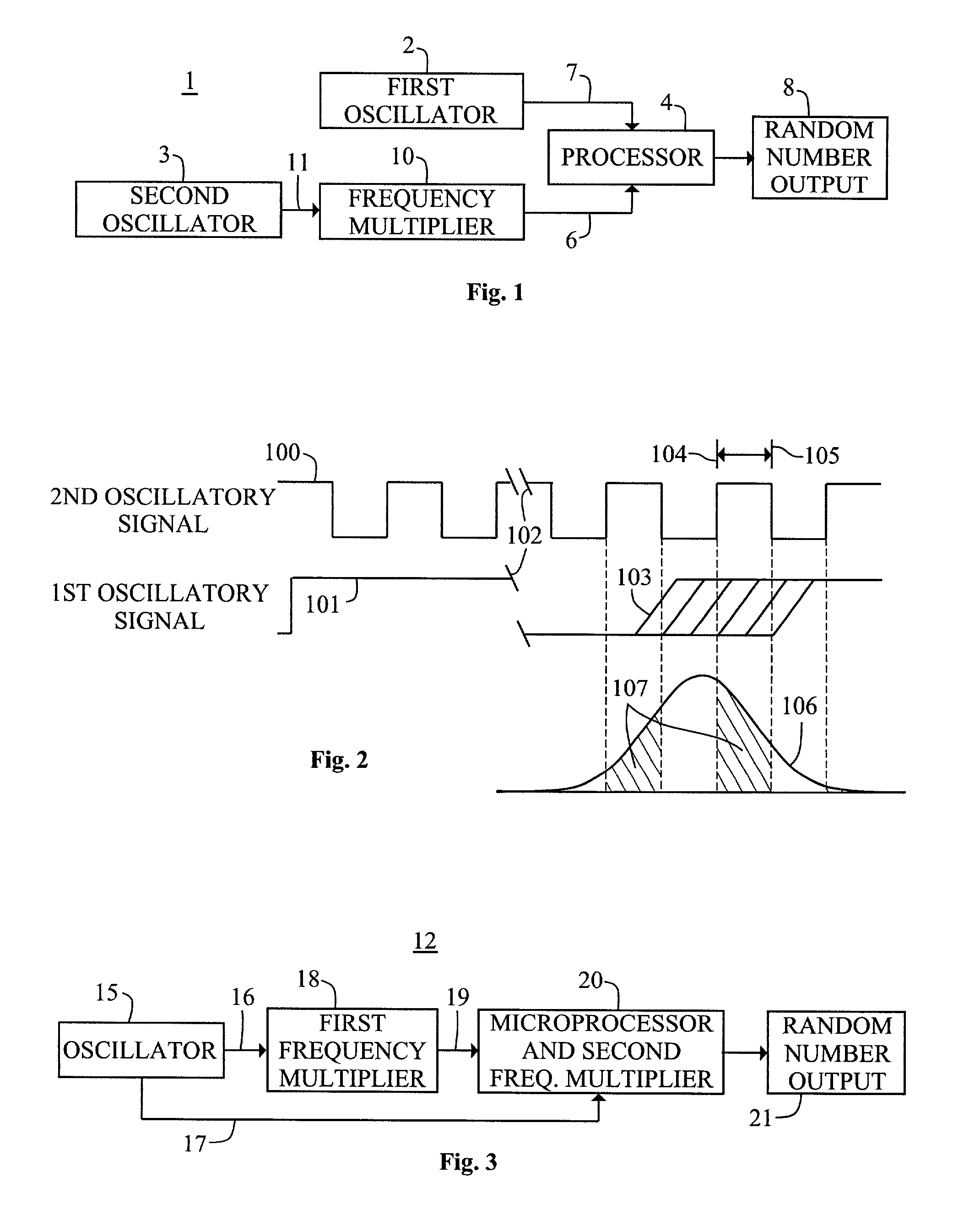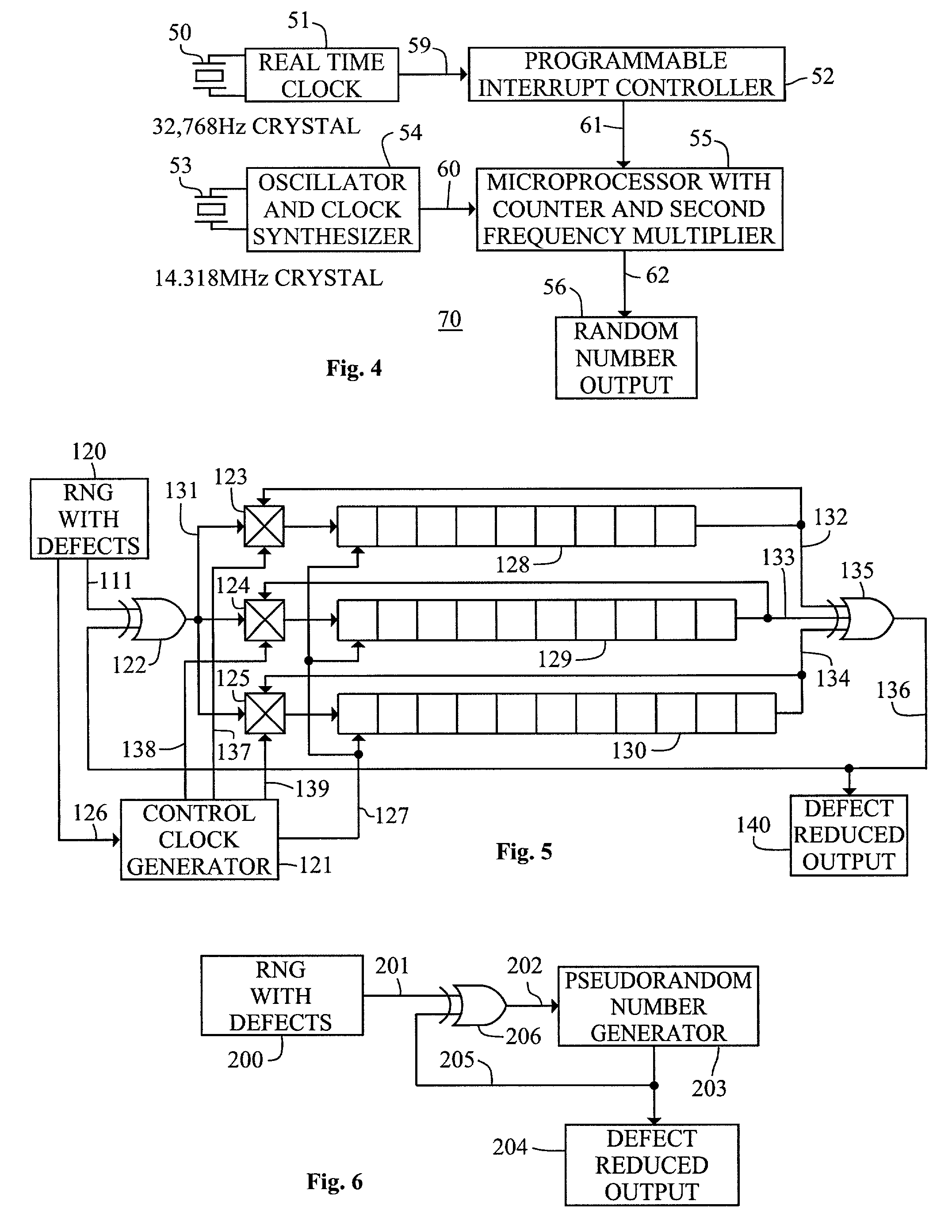True random number generator and entropy calculation device and method
a random number generator and entropy calculation technology, applied in the field of true or nondeterministic random number generators, can solve the problems of wasting hundreds of bits of entropy for each output bit, low generation rate, and intermittent results
- Summary
- Abstract
- Description
- Claims
- Application Information
AI Technical Summary
Problems solved by technology
Method used
Image
Examples
Embodiment Construction
[0029] A random number generator and method is described with numerous specific details such as components, oscillator frequencies and mathematical equations, in order to provide a thorough understanding of the present invention. It will be obvious to one skilled in the art that these specific details are not required to practice the present invention.
[0030] FIG. 1
[0031] A random number generator 1 includes a first oscillator 2 and a second oscillator 3. These oscillators are typically implemented using simple logic elements such as CMOS inverting gates, resistive and capacitive elements, and crystal resonators, as in the case of crystal oscillators. The construction of this and other similar types of oscillators is well known in the art. The term oscillator as used here, indicates a source of oscillatory or time-varying signals. Amplified thermal noise, Schott noise, and quantum mechanical noise generated by radioactive decay or single-photon detection are examples of other sources...
PUM
 Login to View More
Login to View More Abstract
Description
Claims
Application Information
 Login to View More
Login to View More - R&D
- Intellectual Property
- Life Sciences
- Materials
- Tech Scout
- Unparalleled Data Quality
- Higher Quality Content
- 60% Fewer Hallucinations
Browse by: Latest US Patents, China's latest patents, Technical Efficacy Thesaurus, Application Domain, Technology Topic, Popular Technical Reports.
© 2025 PatSnap. All rights reserved.Legal|Privacy policy|Modern Slavery Act Transparency Statement|Sitemap|About US| Contact US: help@patsnap.com



